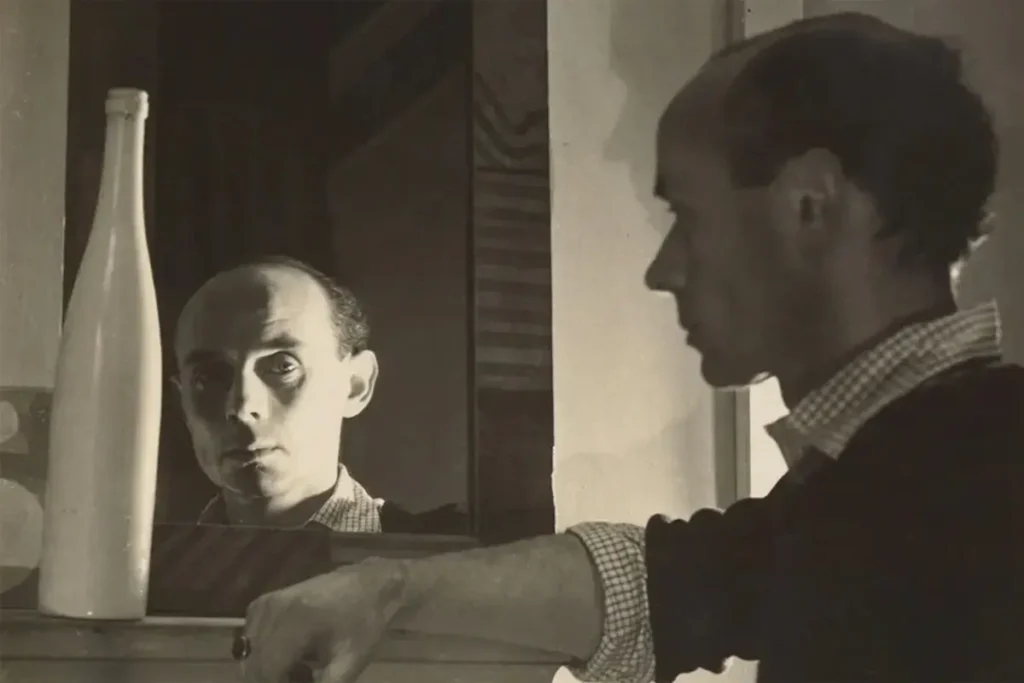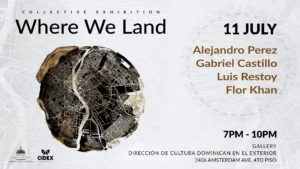Ben Nicholson: The Power of Intuition in His Art
My first encounter with the work of Ben Nicholson happened nearly 20 years ago in one of the galleries at MoMA in New York. Surrounded by a collection of abstract artists ranging from Kandinsky to others whose names I can’t recall, it was Nicholson who truly captured my attention. There exists a kind of power in his art that invites the viewer to immerse themselves in his universe. Despite the simplicity and delicacy of his forms, they become a labyrinth that draws the gaze and contemplation. Since then, I have been an admirer of his work and its aesthetic coherence.
Ben Nicholson is undoubtedly one of the most prominent British painters of the 20th century, leaving an indelible mark on the world of modern art. His work, characterized by the fusion of abstract forms and landscapes, reveals a deep connection with intuition—an element that many critics believe was fundamental to his creative process. Through his legacy, Nicholson invites us to explore the importance of intuition in artistic creation.
An Artist in Dialogue with Intuition
Born in 1894 into a family of artists, Nicholson grew up immersed in an environment that fostered creativity. From his earliest works, it was evident that his approach was not merely technical; he also sought a deeper connection with his surroundings. His work spans from oil painting to collage creation, but in all cases, his intuition seems to guide his hand.
Nicholson firmly believed that art should represent subjective experience. For him, intuition was not just a creative tool but a means to understand the world around him. In his paintings, landscapes and still lifes are not mere reproductions; they are interpretations that arise from an internal dialogue.

Nicholson’s Style: Beyond Technique
Ben Nicholson’s style is a blend of influences ranging from cubism to surrealism, but his personal hallmark lies in the simplicity of his forms and the use of a subtle color palette. This minimalist approach is rooted in a confidence in his intuition. In his works, the arrangement of elements does not always follow a strict logic; rather, it reflects an internal sensation, an instinct that Nicholson cultivated throughout his career.
His famous work “The Coffee Pot” is a perfect example. In this piece, the composition is not based on mathematical perspective; instead, the objects seem to be arranged organically, as if they have found their place through an intuitive process. This approach allows the viewer to experience the work in a more visceral way, connecting with the essence of what is represented.
The Influence of Environment and Intuition
Nicholson was also an tireless traveler, and his surroundings significantly influenced his work. The landscapes of Cornwall, where he spent much of his life, were a constant source of inspiration. The light, colors, and textures of the British landscape were translated into his work intuitively. Nicholson often stated that a painting would begin with a feeling, an emotion arising from the observation of the natural world.
The emotional connection with his environment is evident in his series of landscapes, where nature seems to come alive through his palette and technique. Each brushstroke is a testament to his ability to feel and translate those emotions into visual form.
Conclusions: An Intuitive Legacy
Ben Nicholson is not only remembered as a master of modern painting but also as an artist who embraced the power of intuition. His legacy invites contemporary artists to trust their instincts and seek emotional connections in their work. In a world where rules and technique often prevail, Nicholson’s work is a reminder that art, in its purest form, is an extension of our own human experience.
For Nicholson, intuition was more than just a tool; it was the thread that connected his artistic vision to the world, a bridge that allowed viewers to enter his personal universe. Today, his work continues to inspire generations of artists, reminding us that sometimes the most authentic answers come from listening to that inner voice.









